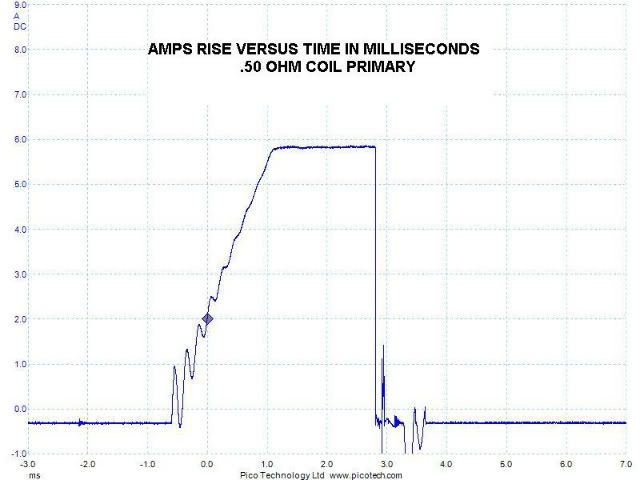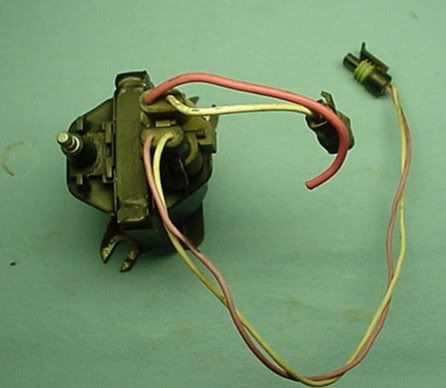Here are some graphical traces of AMPS versus time when a voltage is applied to an automotive coil primary by a transistor "ground". Thanx to "GMC BUBBA" over on the Hamb - its pretty clear what's going on .....


Changing from the 4.0 OHM primary to the 1.5 OHM, jumps the AMPS by more than double - so in the process of gaining performance at the spark plug, coil heating is a direct product. If the coil can take it, fine - if not - life is shortened.
The thiird trace shows the effect of using an electronic circuit with "current limiting" - where the ON period is adjusted electronically to protect the coil. I don't believe the Ignitor I or II either one has current limiting software. Systems that utilize low primary OHMs and current limiting are most often fitted with "E-core" coils that have higher temp capabilities than the old cylindrical versions. They have high performance but don't have the antique look.

This GM coil has .45 OHM primary - notice the #12 wire the factory uses to provide serious current. The major manufacturers have been looking for power - everywhere - and as many years as the Capacitive Discharge System has been around, the inductive set-ups are still popular with OEMs.